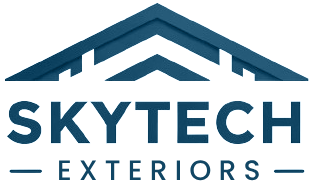Choosing the Right Roofing Material: Pros and Cons
Selecting the right roofing material is a critical decision for any homeowner. The material not only defines the aesthetic appeal of your home but also plays a pivotal role in its protection and energy efficiency. Each roofing material offers distinct advantages and disadvantages, influenced by factors such as cost, durability, climate suitability, and maintenance requirements. This article provides a comprehensive overview of popular roofing materials, detailing their pros and cons to help homeowners make informed choices.
Asphalt Shingles
Description: Asphalt shingles are the most commonly used roofing materials in the United States due to their cost-effectiveness and versatility.
Pros:
- Cost-Effectiveness: Asphalt shingles are among the most affordable roofing options, with prices typically ranging from $1.50 to $5.50 per square foot, installed.
- Variety: They come in a range of colors and styles to match various home aesthetics.
- Ease of Installation: Asphalt shingles are relatively easy to install and repair, making them ideal for quick projects.
Cons:
- Durability: They generally have a shorter lifespan, lasting 15 to 30 years, which is less than more premium materials.
- Environmental Impact: Asphalt shingles are petroleum-based and are not easily recyclable, contributing to landfill waste.
- Weather Sensitivity: They can be prone to damage from high winds and extreme temperatures.
Metal Roofing
Description: Metal roofs are made from materials like steel, aluminum, and copper and are known for their durability and fire resistance.
Pros:
- Longevity: Metal roofs can last 40 to 70 years, depending on the material.
- Fire Resistance: Metal roofing is inherently fire-resistant, a vital safety feature.
- Energy Efficiency: They reflect solar radiant heat, which can reduce cooling costs by 10-25%.
Cons:
- Cost: The initial cost can be high, averaging between $5 and $12 per square foot.
- Noise: Without proper insulation, metal roofs can be noisy during rainstorms.
- Dent Potential: They can dent from hail or falling branches, although some types are more resistant than others.
Clay and Concrete Tiles
Description: These tiles offer a traditional aesthetic and are extremely durable, often used in Mediterranean, Spanish, and Southwestern architecture.
Pros:
- Durability: Clay and concrete tiles can last more than 50 years.
- Fireproof: These materials are non-combustible, enhancing fire safety in your home.
- Style Variety: They come in many shapes, colors, and styles, offering aesthetic flexibility.
Cons:
- Weight: They are heavy, requiring reinforced roof framing, which can add to installation costs.
- Fragility: Tiles can break underfoot, making maintenance more challenging.
- Climate Limitations: They are not well-suited for climates with frequent freeze-thaw cycles.
Slate Roofing
Description: Slate roofing is made from natural slate stone and is known for its natural beauty and longevity.
Pros:
- Longevity: Slate roofs can last over 100 years if properly maintained.
- Aesthetic Appeal: Offers a distinctive and elegant appearance.
- Fire and Weather Resistance: Slate is highly resistant to fire and inclement weather conditions.
Cons:
- Cost: It is one of the most expensive roofing materials, often costing between $10 and $30 per square foot.
- Weight: Like clay and concrete tiles, slate is very heavy and often requires additional structural support.
- Installation Expertise: Slate installation requires specialized skills, making it important to find a contractor with relevant experience.
Wood Shakes and Shingles
Description: Wood shakes and shingles provide a natural look and are made from cedar, redwood, or pine.
Pros:
- Natural Look: Offers a rustic aesthetic that can enhance the appearance of traditional and contemporary homes alike.
- Insulation Properties: Wood has natural insulating properties, providing some energy efficiency benefits.
- Environmentally Friendly: If sourced sustainably, wood is a renewable resource.
Cons:
- Maintenance: Requires regular treatment to prevent rot, mold, and insect damage.
- Flammability: Unless treated with fire retardants, wood shingles are susceptible to fire.
- Lifespan: Generally lasts about 20 to 30 years, which is shorter compared to more durable materials like metal or tiles.
Synthetic Roofing (Rubber, Plastic, Composite)
Description: Synthetic roofing materials, such as rubber, plastic, and composite, are modern alternatives that replicate the look of natural materials.
Pros:
- Durability: Synthetic materials are engineered to be durable and may come with long warranty periods.
- Low Maintenance: These materials require minimal upkeep compared to natural products.
- Lightweight: Unlike slate or tile, synthetic materials do not typically require extra roof support.
Cons:
- Cost Variation: Prices can vary widely, generally between $4 and $6 per square foot.
- Quality Inconsistency: The quality of synthetic roofing products can vary significantly between manufacturers.
- Market Novelty: Being relatively new on the market, long-term performance data is still limited.
Conclusion
Choosing the right roofing material involves balancing various factors, including cost, durability, maintenance, and aesthetic preference. By understanding the pros and cons of each material, homeowners can select a roofing option that best suits their needs, ensuring long-term satisfaction and protection for their home. When making this significant decision, consider not only the initial cost but also the long-term benefits and challenges associated with your chosen material.


